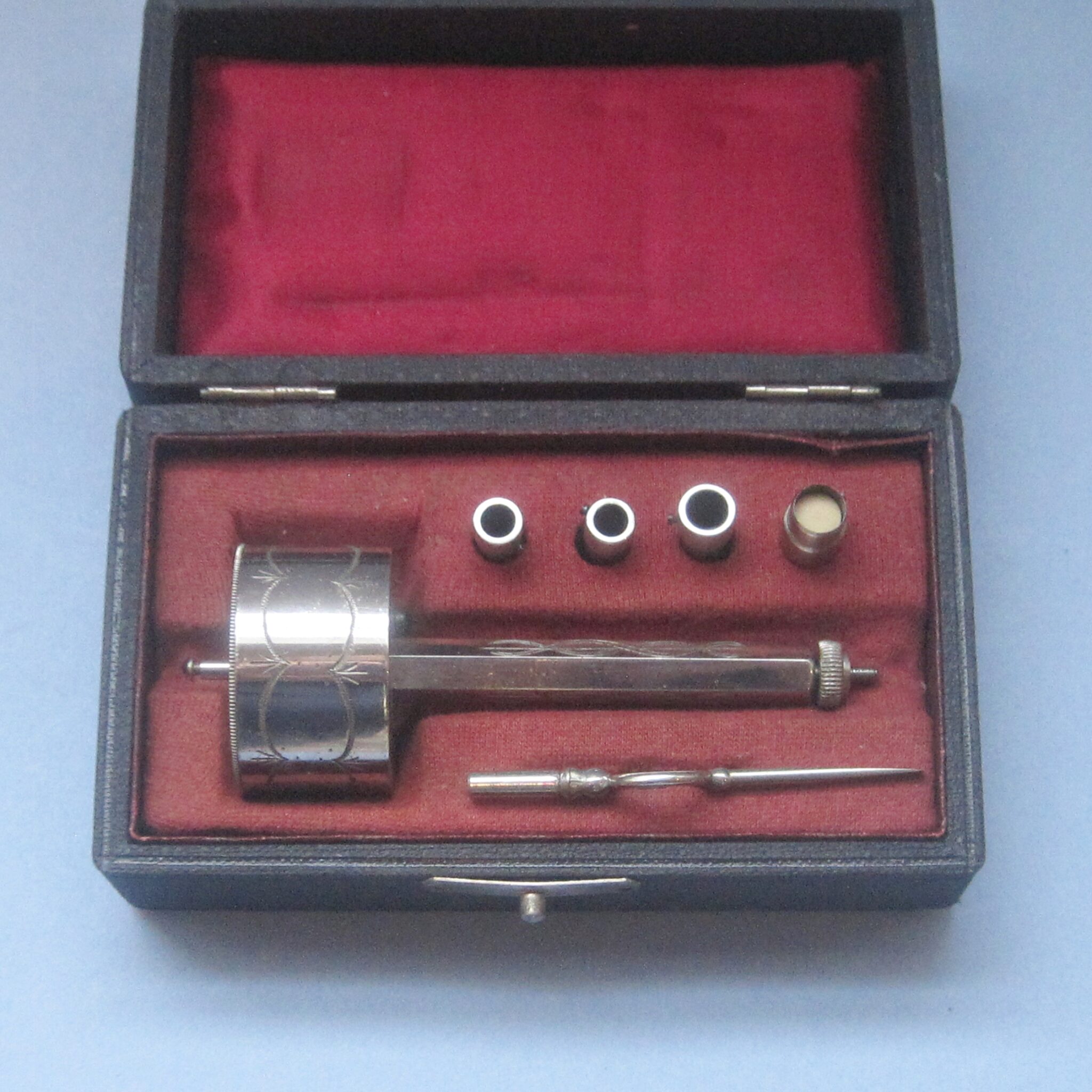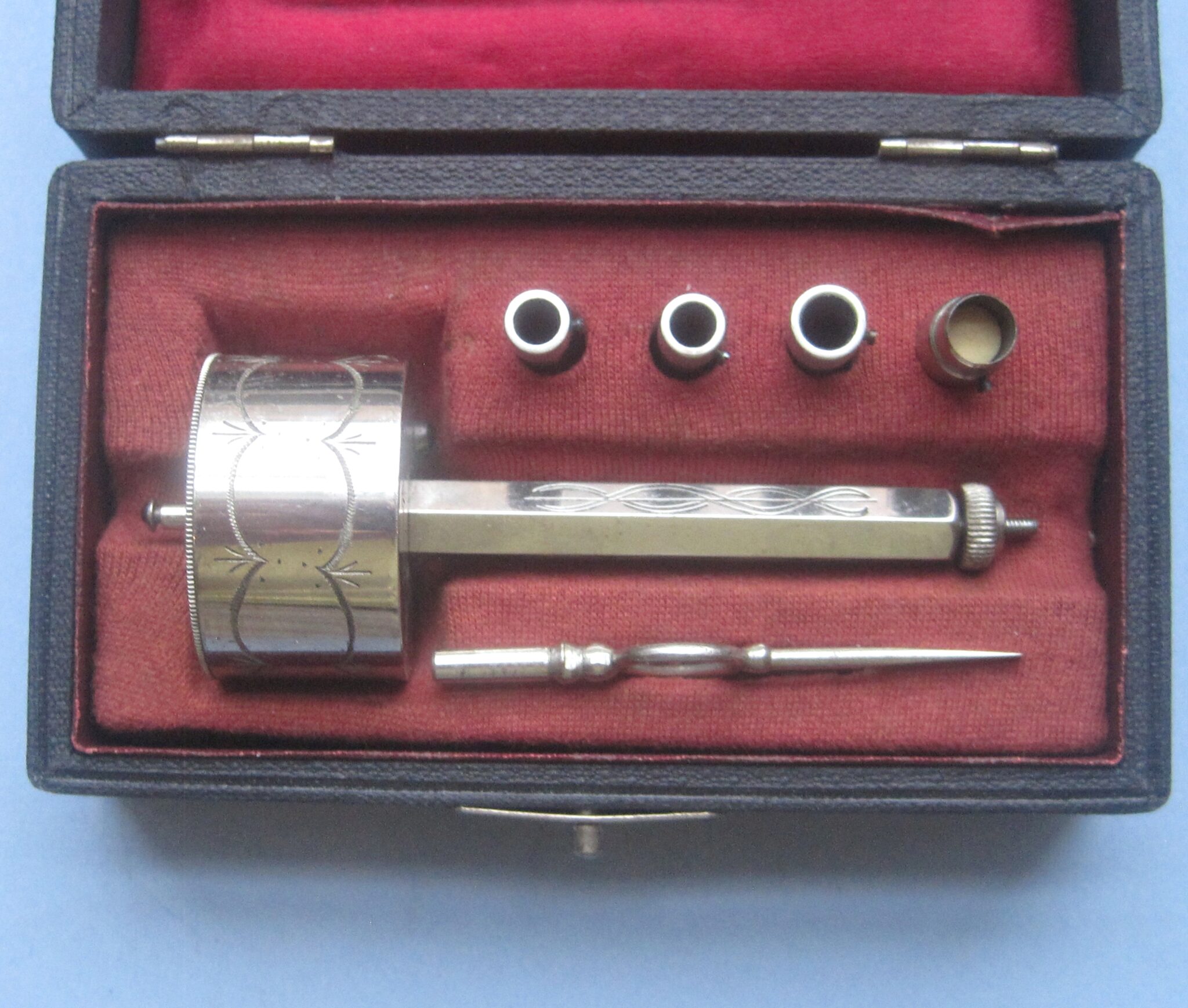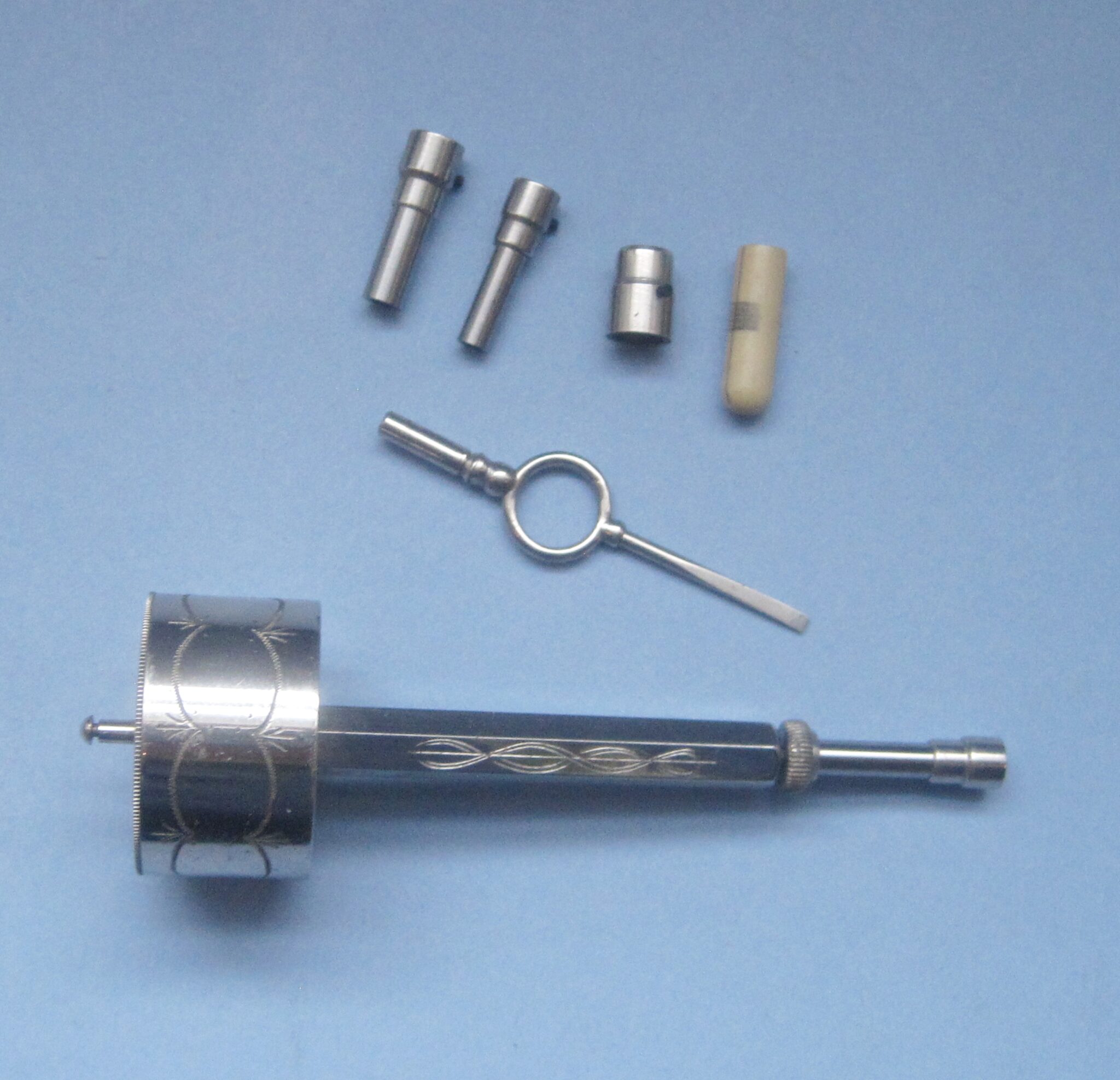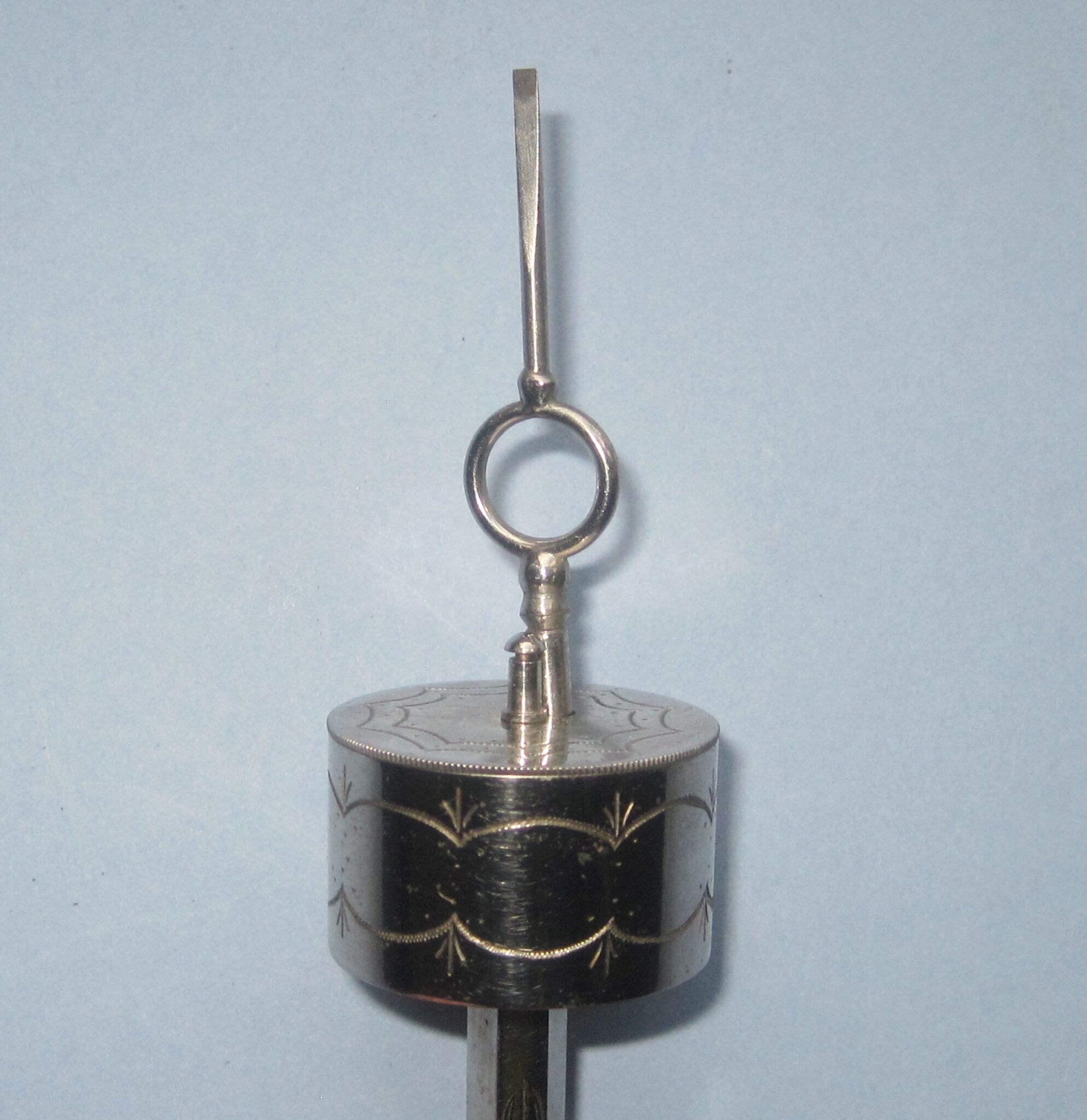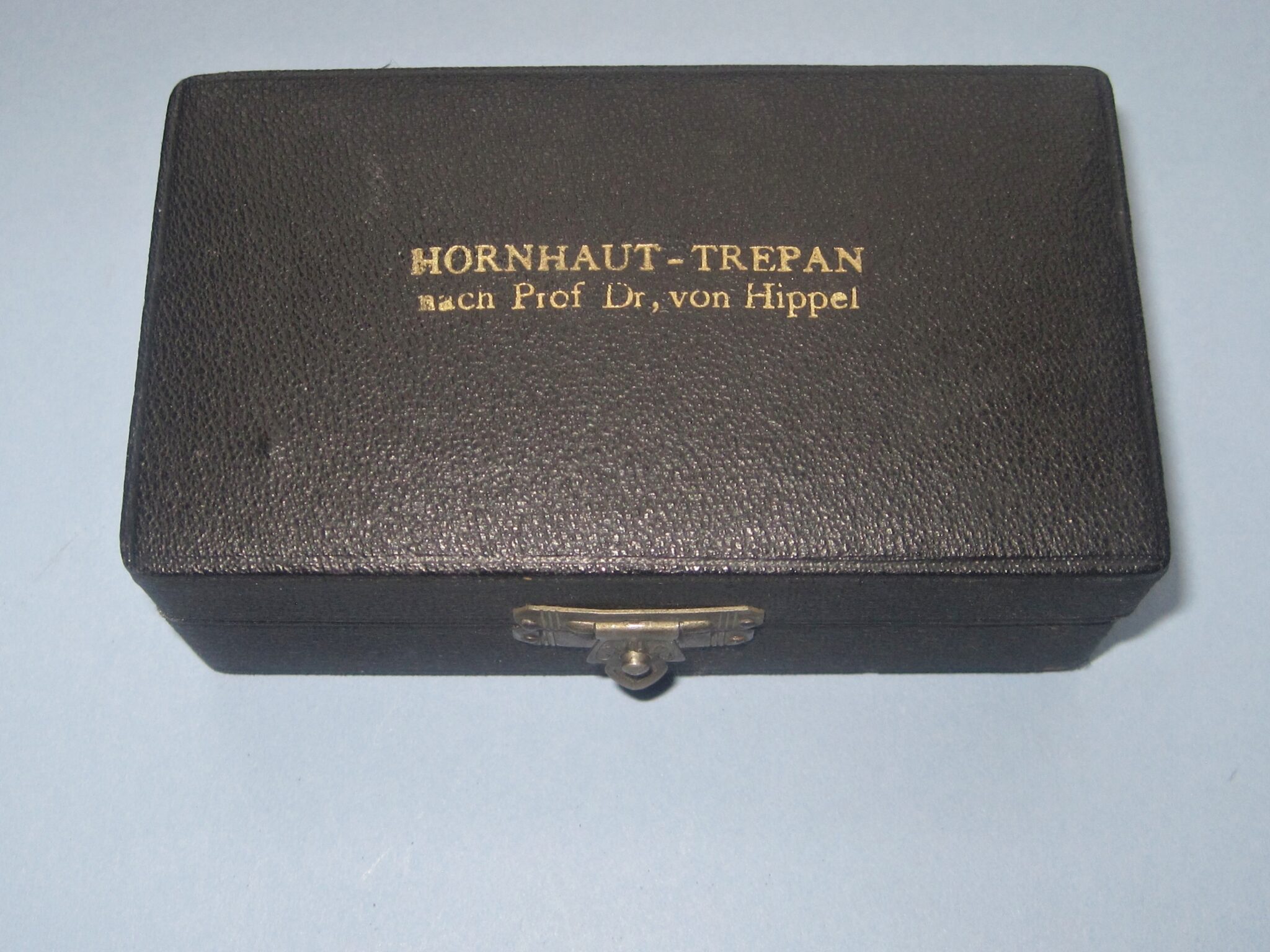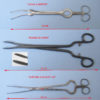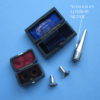Description
A fine example of Prof Arthur von Hippel’s (1841-1916) clockwork corneal trephine, complete in fine mechanical and cosmetic condition with its original labeled hard case. This instrument was introduced by Hippel in 1891. Length of case: 4″ or 10cm. Hipple was important figure in 19th century ophthalmology, especially in relation to keroplasty (aka: corneal transplantation). See excerpt below:
“The German professor, Arthur von Hippel (1841-1916),[1] who developed a number of graft instruments including a clockwork trephine, advocated lamellar xenografts, whereas the English ophthalmologist Henry Power[15] favored allografts. Power believed that allografts had ‘better matched thicknesses’ and was also the first to really understand the importance of allografts in terms of failure. These eminent ophthalmologists also disagreed on the ideal form of corneal transplantation. Von Hippel promoted lamellar grafts as he believed that corneal transparency depended on the integrity of the endothelium and Descemet’s membrane. Power, however favored penetrating keratoplasty.”
. 2013 Sep-Dec;6(Suppl 1):S12–S17. doi: 10.4103/0974-620X.122289
Ask the Dealer
Dealer information
 M and R Gordon
M and R Gordon
Michael and Roberta Gordon have been dealing in medical and dental antiques for more than four decades. They have helped build a number of major private collections and have contributed to the holdings of many museums. They also deal in other scientific and technology related items, including calculating instruments, office machines, patent models and wine-related accessories such as corkscrews. ROBERTA GORDON IS A SKILLED RESTORER WHO CAN HELP YOU WITH ANY INSTRUMENTS AND CASES THAT NEED ATTENTION. Feel free to contact them for details at: [email protected] or 718-541-5974




